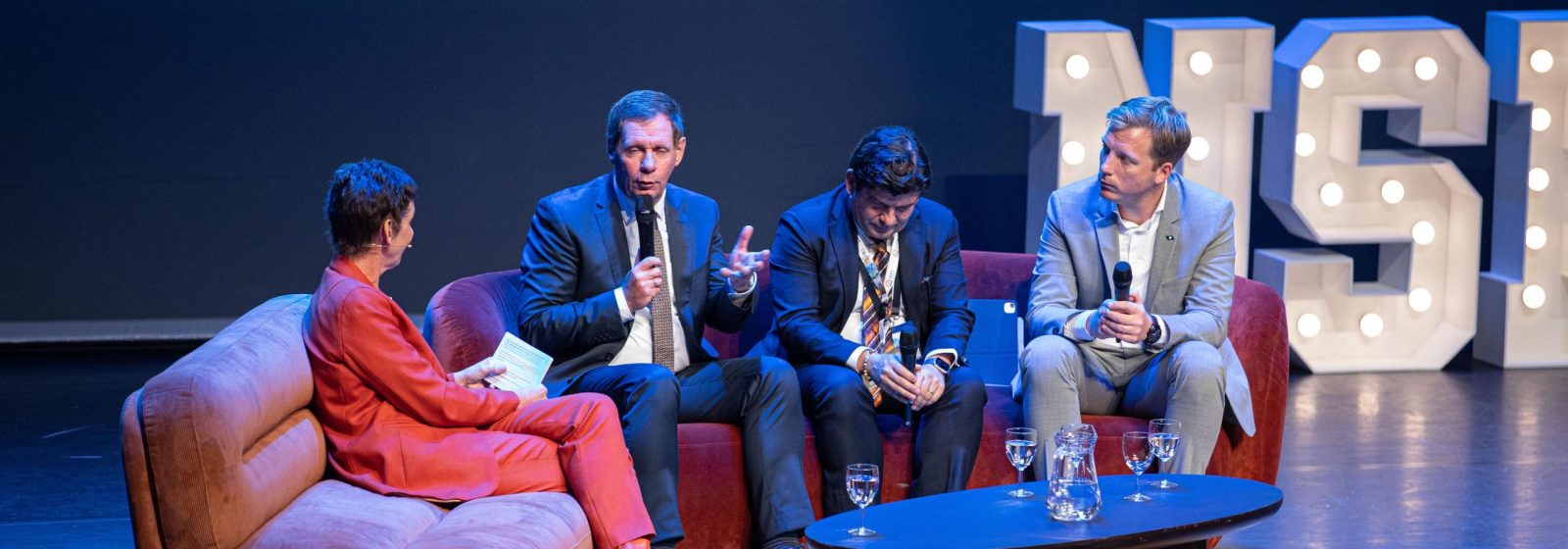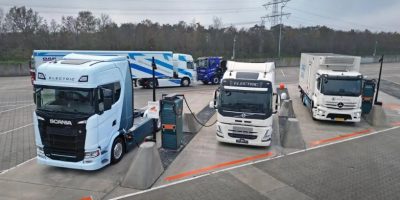
On the occasion of the opening of the New Lock in Terneuzen, ProMedia organised the North Sea Port Conference on Friday 11 October. Over 650 visitors first took a look at the brand new lock and then immersed themselves in a substantive conference. The hot topic was the need to deepen the tunnel at Zelzate.
“Today is a historic moment for North Sea Port and for the cooperation between Belgium and the Netherlands,” said Daan Schalck, CEO of North Sea port. “The new lock we are building here represents not only a technical masterpiece, but also the starting point of a new era for the entire Canal Zone. Our ambition with this lock extends far: this project allows us to compete at a global level and strengthens our position as an international port.”
“The importance of the lock goes beyond the technical aspect. It is a symbol of the long-term cooperation between Belgium and the Netherlands, a partnership rooted in our shared history and vision for the future. This project highlights the strong understanding between our countries and the potential of cooperation in the border region. Despite tough discussions on issues such as budget, we have shown that we are capable of building something great together.”
Harnessing potential
With this lock, the fourth largest in Europe, the foundations have been laid for the further development of North Sea Port. “This lock is not the end point, but rather the starting point of new opportunities,” Schalck said. “Thanks to the arrival of the lock, we can receive larger ships. This will not only improve the handling of inland navigation, but also contribute to the growth of a more sustainable inland navigation sector. Fewer waiting times and larger ships mean lower costs for companies – a saving of millions of euros.”
“Our ambition does not stop at this lock. There are countless opportunities ahead, and we will not rest on our laurels. The merger port and the new lock prove that cooperation pays off and that the future is full of opportunities. Let us continue to work together to exploit the full potential of this lock and our port complex, and to further put North Sea Port on the map as the beating heart of European inland navigation and maritime logistics,” Schalck said.
Industry
During a subsequent panel discussion, both Geert van Poelvoorde, CEO ArcelorMittal Europe, and Jelle van Koevorden, managing & route director DFDS, emphasised the importance of the new lock.
“At ArcelorMittal, we process 11 million tonnes of raw materials into 5 million tonnes of steel every year in Gent,” van Poelvoorde said. “The strategic location of the plant is therefore crucial and the new lock in Terneuzen gives us the opportunity to strengthen our position. Ghent is transforming from a semi-coastal plant to a fully-fledged coastal port, which allows us to benefit from larger ships and better connections to global markets.”
Van Poelvoorde also referred to the perennial bottleneck en route to Ghent: the tunnel in Zelzate. “The channel depth there is only 12.5 metres and thus further steps must also be taken to improve access,” the CEO said. Van Poelvoorde got the laughs afterwards with a reference to a statement by EU representative Eddy Liegeois, who expressed some embarrassment at the “paltry” €48 million Europe had contributed to the €1.2 billion project. “We still need budget for the deepening of the Zelzate tunnel, and we now know from where that could come. This project transcends national borders and is a perfect example of EU-level cooperation between Belgium and the Netherlands,” added ArcelorMittal Europe’s CEO.
Gamechanger
For DFDS, with a route from Ghent to Gothenburg, the new lock is a gamechanger. “We provide the supply chain for Volvo Cars and Trucks in Ghent, where the precision of our operations is crucial. Our just-in-time deliveries achieve 98% accuracy, and thanks to the new lock we can now achieve a time saving of one hour per ship – which is huge, considering that we sail this route 1,000 times a year. This is not only beneficial for efficiency, but also contributes to the Green Corridor concept, where we can sail slower, which is beneficial for the environment.”
“However, there are still some nautical constraints, such as the width of the canal, which is currently 37 metres. Future growth and further efficiency would require an expansion to 47 metres. It is also important to invest in infrastructure, such as modifying the bends and providing passing lanes. Although these are long-term plans, it is already important to make preparations now,” it echoes.




